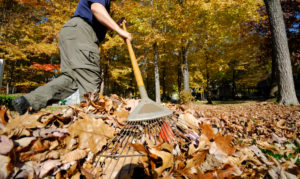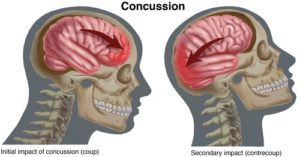After an injury your body sends proteins in the blood to act as messengers to help regulate the healing. The proteins involved in this process are derived from cells called ‘
platelets’
. When you have an injured area, the platelets are activated and gather at the injury site to release beneficial proteins called
“growth factors”.
Platelet Rich Plasma or PRP injection is where a small amount of your own blood is taken, then put through a separation process to create the highest concentration of platelets or growth factors. These growth factors are then injected into your specific injured area to aid and enhance healing.
The entire injection process takes less than 30 minutes. The increased levels of growth factors have the potential to improve signaling and recruitment of cells. This concentration of platelets (growth factors) can be 5-10 times greater than usual.
Since this injection is using your body’s natural properties, side effects are rare. Some insurance companies cover this procedure. Contact your insurance provider for coverage information on your plan.
Famous athletes such as;
Tiger Woods and tennis star Rafael Nadal
have received PRP injections for various problems such as sprained knees and chronic tendon injuries. Some athletes have credited PRP with their expedited return to competition.
Ask your clinician if PRP may be a healing option for you.
We can refer you to a Doctor for consultation.
More
Winter Safety Tips
As the temperature drops, the number of slips and falls rise. Winter’s wet and icy conditions are dangerous and it’s important to take the right precautions. Slips and falls during the winter months cause hundreds and thousands of injuries each year in Canada. While it is a threat to children, the adults and elderly have a much longer, harder fall – and are more likely to break things. A simple break or muscle sprain can cause a lot of pain and suffering, and for the elderly it can be life threatening. So in order to ward off any time in the hospital or emergency room take note of these slip and fall prevention tips:
-
Wear the right shoes.
We see plenty of broken or sprained ankles from women walking in heels on a warm summer day, so in the winter heels would probably be your worst option. Men are not off the hook here either. Men’s dress shoes typically have flat bottoms with no tread. You might as well be walking on sleds. The right footwear should, and is, your best defense against slipping and falling. Try to find something with rubber bottoms with a good thick tread that will grip the snow and ice better.
-
Walk like a penguin.
When walking on snow and ice take shorter slower steps. You want as much surface area of your feet to be in contact with the ground as possible. If you come across a patch of solid ice, shuffling your feet can be your best option as it will give you the most stability.
-
Know how to fall.
When carrying a briefcase, lunch bag, or your children you are just asking for trouble. If you were to fall this now eliminates one or both arms from helping absorb the impact. Most deaths from falling on ice occur when the person hits their head on the ice. This also means keep your hands out of your pockets and gloves on. While you may injure your arms or shoulders you will protect your head.
-
Be cautious everywhere.
Walk near something you can hold on to like handrails or a fence. Grab sturdy objects when possible… and your friend or child IS NOT a sturdy object. You will likely pull them down with you. When getting out of a car, hold on to the door until you find out just how icy it is. Test the ground before you hop right out.
Even if you follow all these tips and precautions we still cannot guarantee that you won’t have an encounter with the ground sometime this winter. But the better you prepare the less likely you are to slip and fall.
For those of you with balance issues already, your job is harder still. If you have not yet had physiotherapy to help you with your balance issues, or if you’d like a therapist to assess your balance concerns, please call us to book an evaluation.
If you have already taken a hard fall, let one of our Physiotherapists help you recover and get you back on solid ground.
More
Movember is Men’s Health Month
The state of men’s health is in crisis. Men experience worse longer-term health than women and die on average six years earlier.
-
1 in 6 men may be diagnosed with prostate cancer, and 1 in 2 men may be diagnosed with some form of cancer by the age of 85.
-
Prostate cancer rates will double in the next 15 years.
-
Testicular cancer rates have already doubled in the last 50 years.
-
Obesity has taken centre stage as a major risk factor for chronic disease and almost 2/3 of Canadians are considered to be overweight or obese.
-
1 in 8 men experience depression and three quarters of suicides are men.
-
Poor mental health leads to half a million men taking their own life every year. That’s one every minute.
More

Fall has arrived! If you’re a homeowner, there is likely some lawn work that you’re trying to get done – and raking leaves usually tops the list. This is a physically demanding activity that involves twisting, reaching, pulling, bending and lifting repetitively and with weight. If these movements are not done properly, and if underused muscles are being overtaxed in a short period of time, it can lead to sore and stiff muscles, painful shoulders and most commonly it can cause injury to the mid and lower back.
Here are some helpful tips
:
Stretch before you rake
:
Warm up with light exercise before heading out to rake. Take about 10 minutes to gently stretch your neck, shoulders, torso, back, wrists and hips prior to raking. (Our physio’s can provide you with some great stretches to help you with this.)
Use your legs
: When you’re bagging the piles of leaves, (which can often be heavy because they are wet) make sure you bend your knees. Keep your back straight and let your legs do the bulk of the work – not your back.
Avoid twisting from the waist
: People often plant their feet and over-rotate their spine which can really cause stress and strain to the lower back. Pivot towards your forward foot first, your hips should follow next, then the rest of your body.
Use the right equipment
: The rake you use should be the right size for your height and strength. The width of the rake head doesn’t much matter. A light weight, ergonomic rake that has bent or side handles ensures that your elbows are slightly bent and helps with good posture. Light weight plastic leaf rakes are also a good option.
Pace yourself
:
Section off areas of your yard and complete in stages, especially if it is a large property. Take frequent breaks, and as with any physical activity, drink plenty of water before, during and after lawn work.
If you do experience low back pain or neck pain, our therapists can identify and safely treat your pain, and provide you with strengthening exercise to help your spine and improve your posture.
Contact us to book an appointment.
STAY FIT, STAY HEALTHY, STAY ACTIVE
More

Concussion is a mild traumatic brain injury (mTBI) that can damage brain tissue and change the chemical balance of the brain.
Concussion may cause physical, mental and emotional symptoms and problems, both short term and long term.
Every concussion is considered a serious injury by health care providers.
Causes of concussions
Car accidents (head impact, or whiplash)
Work accidents (falls, head trauma)
Playground accidents (falling from a slide or swing)
Sport injury to the head or neck
Any type of fall or direct blow to the head, face or neck
Violent events (physical abuse which the head is shaken, being too close to an explosion)
More


